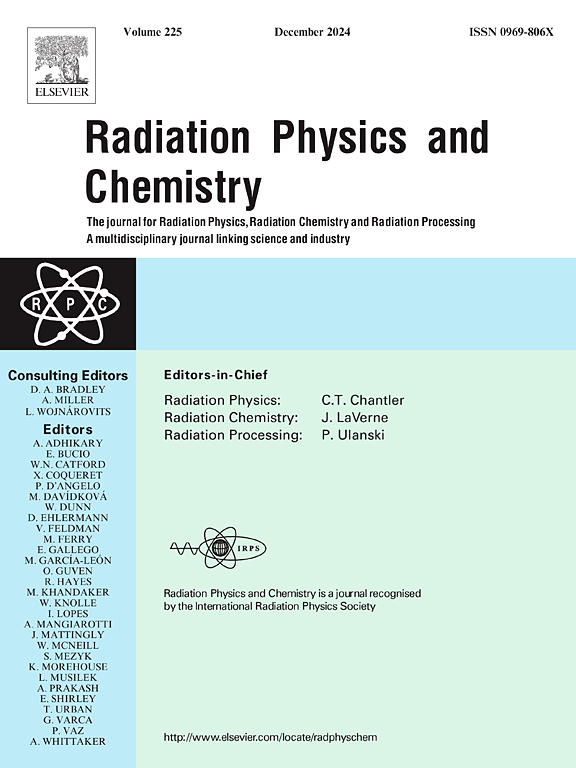Evaluation of excitation functions of 127I(p,xn) 121,122, 123, 125,127Xe reactions, with particular reference to the production of 127Xe and 123I for medical use
IF 2.8
3区 物理与天体物理
Q3 CHEMISTRY, PHYSICAL
引用次数: 0
Abstract
Cross section data for the formation of 121,122,123,125,127Xe via proton induced reactions on 127I were critically analyzed. Three nuclear model codes (TALYS 1.9, ALICE-IPPE, and EMPIRE 3.2) were used to ensure the consistency and reliability of the experimental data. Utilizing a well-developed evaluation methodology, a recommended fit for each excitation function was obtained, based on theoretical predictions of nuclear models and experimental cross sections. By using the recommended/reference results, thick target yields were calculated for each production route and its associated impurity reactions. The indirect production of the radionuclides 121,122,123,125I was explored. Special attention was paid to standardization of cross section data for the production of the medically important radionuclides 127Xe and 123I via the routes 127I(p,n)127Xe and 127I(p,5n)123Xe(EC, β+)123I, respectively.
评估 127I(p,xn)121、122、123、125 和 127Xe 反应的激发函数,特别是关于生产医用 127Xe 和 123I 的情况
对127I上通过质子诱导反应形成121、122、123、125、127Xe的截面数据进行了批判性分析。使用了三种核模型代码(TALYS 1.9、ALICE-IPPE 和 EMPIRE 3.2)来确保实验数据的一致性和可靠性。利用完善的评估方法,根据核模型的理论预测和实验截面,为每个激励函数获得了推荐的拟合结果。利用推荐/参考结果,计算了每种生产途径及其相关杂质反应的厚靶产率。探讨了放射性核素 121、122、123、125I 的间接生产。特别关注了分别通过 127I(p,n)127Xe 和 127I(p,5n)123Xe(EC, β+)123I途径生产医学上重要的放射性核素127Xe和123I的横截面数据的标准化。
本文章由计算机程序翻译,如有差异,请以英文原文为准。
求助全文
约1分钟内获得全文
求助全文
来源期刊

Radiation Physics and Chemistry
化学-核科学技术
CiteScore
5.60
自引率
17.20%
发文量
574
审稿时长
12 weeks
期刊介绍:
Radiation Physics and Chemistry is a multidisciplinary journal that provides a medium for publication of substantial and original papers, reviews, and short communications which focus on research and developments involving ionizing radiation in radiation physics, radiation chemistry and radiation processing.
The journal aims to publish papers with significance to an international audience, containing substantial novelty and scientific impact. The Editors reserve the rights to reject, with or without external review, papers that do not meet these criteria. This could include papers that are very similar to previous publications, only with changed target substrates, employed materials, analyzed sites and experimental methods, report results without presenting new insights and/or hypothesis testing, or do not focus on the radiation effects.
 求助内容:
求助内容: 应助结果提醒方式:
应助结果提醒方式:


